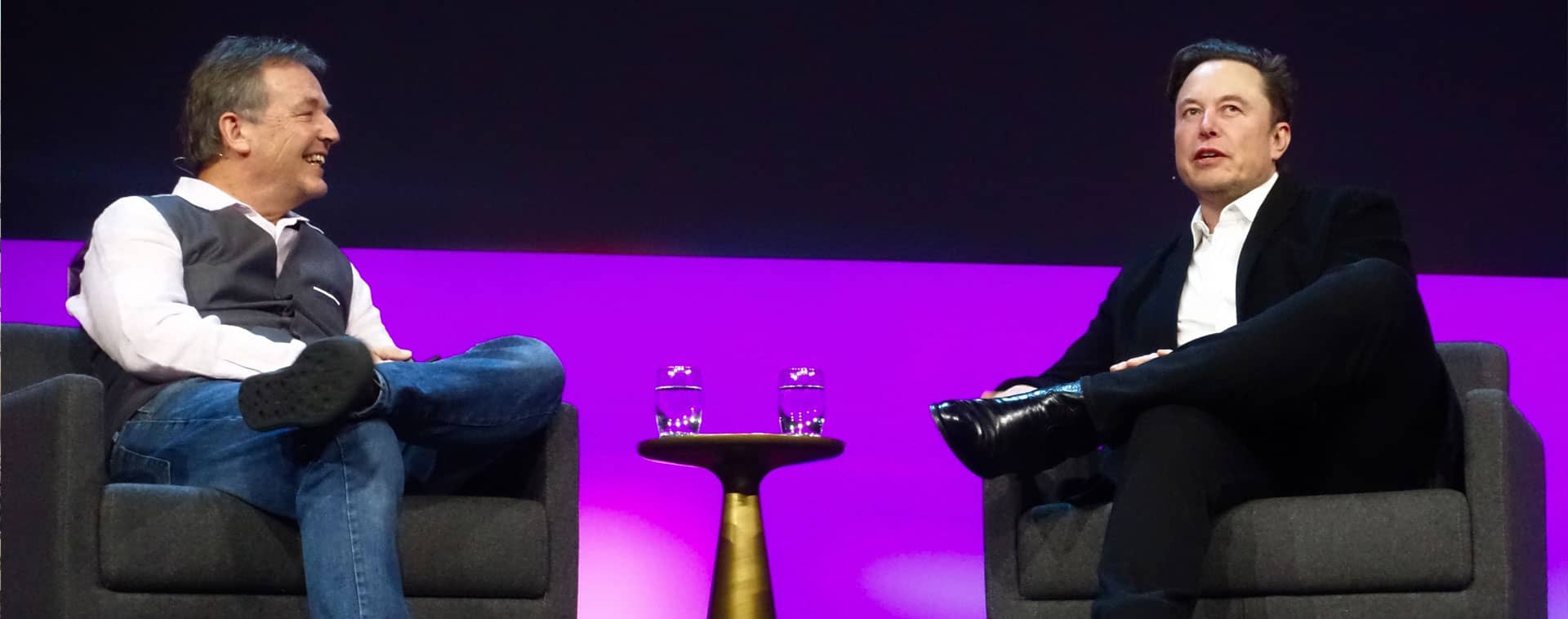In the fast-paced, ever-changing world of the Internet, there have been some companies that are so large and well-established that they seem like they will be around forever.
Some examples that spring to mind are Microsoft, Yahoo, Amazon, eBay and Google. In September 2023, Google will be celebrating its 25th anniversary, and the others have been going for even longer, having not just survived but thrived in the internet era.
In the mid-2000s, they were joined by a new crop of social media giants, foremost among them Facebook, Twitter and YouTube (owned by Google). All three have come to be such standard fixtures in our lives that it is hard to imagine the internet without them.
The $44-billion buyout of Twitter last October by the world’s wealthiest individual, serial entrepreneur Elon Musk, has disrupted that scenario.
First, he laid off or imposed working conditions that led to many of the then 8000-strong Twitter workforce leaving - over four fifths of the company’s employees have gone at the time of writing, cutting the payroll to 1500 staff.
Secondly, he ended the tradition of Twitter being an advertising-funded platform free at the point of use, and instead introduced a premium subscription model with benefits exclusive to paid subscribers, such as identity verification ticks and enhanced Tweet visibility privileges. In effect, he has transformed Twitter’s member ecosystem from a place where users’ visibility rises or fall based on the quality and interest of their posts into a pay-per-play system, in which money generates visibility.
The uptake of the paid verification offer is generally reported to have been low. This should come as no surprise to those who recall the fate of MSN Chat after it moved from a free model to a paid subscription model in 2003, and saw user numbers tumble so far that use of the previously thriving service collapsed, although in that case the removal of the free option was more extreme than the measures taken by Musk.
In July 2023, seven months on from his purchase of the company, Musk has gone one step further and commenced a process that will sweep away the existing Twitter branding. The familiar blue bird logo, a universal symbol of levity and freedom, has now been replaced on the desktop version of Twitter by a stylised letter X against a jet-black background. At the same time, the name Twitter has itself been removed and replaced by ‘X’, a move foreshadowed by Musk placing Twitter within a new company called X Corp back in March.

Making such wholesale changes at a single stroke breaks every rule in normal branding practice (NB: the linked article contains some bad language). Brand equity is built on familiarity, and users become comfortable with what they come to know and trust. Twitter is a brand that has been building its reputation for the past 17 years and has become one of the best-known and most widely-recognised social media platforms over that time. Killing the bird logo and the Twitter name goes beyond what we think a sensible branding expert would recommend, and casts Musk as an iconoclast, tearing down a brand and icon that had become familiar to hundreds of millions of active users. In terms of business logic, at a time when consumers are putting much more emphasis on branding integrity and purpose, this seems like a risky and counter-productive move for Musk.
The new logo may in itself have some attractive features from a design perspective. It could be argued to be more ‘cool’ as a design statement than Twitter’s bird, an image of dark sophistication rather than one of casual freedom. But that is surely missing the point. Cool images do not necessarily attract or retain mass audiences. They are designed to appeal to niches that want their style to be somewhat exclusive. While some audiences may enjoy the style of the new logo, a great many existing users from all walks of life who (like most people) are resistant to change will find it off-putting.
Just as the average person would not be pleased at having their bright and cheerful walls repainted in black by a new landlord, we think that the average Twitter user who has got used to living in an airy, free-feeling space styled light blue and named after birdsong will not be best pleased about the environment they are used to being recast in the image of stygian darkness overnight.
The letter ‘X’ has historically been associated with forbidden or salacious content, reflected in the traditional X-rating of adults-only cinema content in the UK until it was replaced by the ‘18’ rating in 1982; and more recently, in the more specific association of the letter X with websites specialising in the hosting of explicit adult content. These cultural associations around the letter ‘X’ with 18+, ‘X-rated’ and potentially unsavoury content may risk putting off a whole phalanx of users from the platform.
Perhaps this is a conscious strategy on Musk’s part, generating publicity by building intrigue and causing a stir. The internet is definitely more against this move than for it, but we’re all talking about it, aren’t we? Perhaps a PR storm is exactly what he wanted. But will that by itself entice more people to use the platform in the long run - that proposition is more doubtful.
Ironically, it is Musk’s widely reported vision to expand Twitter into a much more comprehensive one-stop online lifestyle platform integrating commerce, communication and finance, akin to China’s WeChat that may be most significant. If he succeeds in this ambitious goal, it will be interesting to observe how his platform will then be received. There are so many other big online players operating in the lifestyle management space, can ‘X’ take them all on at their own game - and will people even want to use and trust one app that can supposedly service all of their needs? To us, relying on a one-stop shop of that character sounds very much like putting all our eggs in one basket.
The successful implementation of Musk’s long-term vision for the platform is likely to be a long way off, and at this stage whether it will meet with the degree of success he envisages is an open question.
In the meantime, the drastic rebranding is likely to alienate a significant portion of the existing user base, who may well be put off by the new dark, trendy imagery that seems to say that only the 'cool kids' whose sense of style matches Musk’s personal taste are welcome, while leaving others in a strange, even unwelcoming environment.
For millions of users who have invested a lot of time in building up their networks and followings on Twitter, there may at least at first be a reluctance to acknowledge that anything of substance has changed, and a desire to just make do with the new branding, and to carry on as normal. But the disastrous experience of Myspace when it totally changed the user interface a few years after its takeover by media mogul Rupert Murdoch in the mid-2000s is a cautionary tale, which may indicate what is to come.

One recent source suggests that Musk himself admitted that Twitter’s market value had already fallen to less than half of what Musk paid for it before this rebranding exercise. And what goes down in value can sink still further.
The social media landscape is changing, and Twitter’s rebranding will be a learning experience for us all, not least for small businesses and organisations who have built up their own brand equity on the platform and attracted a community of followers.
Our initial advice to businesses is not to spend time on alternatives yet, but to adopt a cautious ‘wait and see’ approach. Yes, we are sailing into the unknown; but only time will tell how the platform may change in the future and how that will impact on users of the platform, and on what businesses get out of it. That may inform your future content strategy on Twitter, and whether to spend time on the platform at all.
Musk may eventually pause his sweeping changes and hand over the reins to someone who recognises the value of stability. There could also be opportunities: if the changes he is making mean some businesses abandon Twitter, this potentially leaves audiences still using the platform open to following similar businesses on it, and maybe ready to follow you.
While a mass user exodus is possible, as happened historically with Myspace, it is likely to take years for the dust to settle on X, and for the full consequences of this rebranding to become apparent. It would be wise to wait and see what happens. That said, our collective expectation is that X, formerly Twitter, will become a smaller and more niche discussion platform than it was previously, as a substantial portion of the user base takes refuge in other social media venues such as Mastodon, Threads, Facebook, Instagram and Tiktok.
Further down the line, Musk’s ambitions of creating a multi-purpose platform or all-rounder app may well come to fruition - he is not someone to bet against based on past achievements. His record shows him to be, if nothing else, tenacious and determined. To what degree the eventual platform will be successful remains to be seen, and its future will surely depend in no small part on the creative visions and implementations of his employees.
